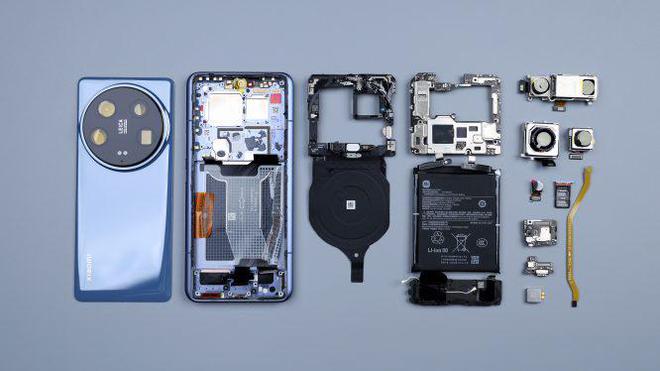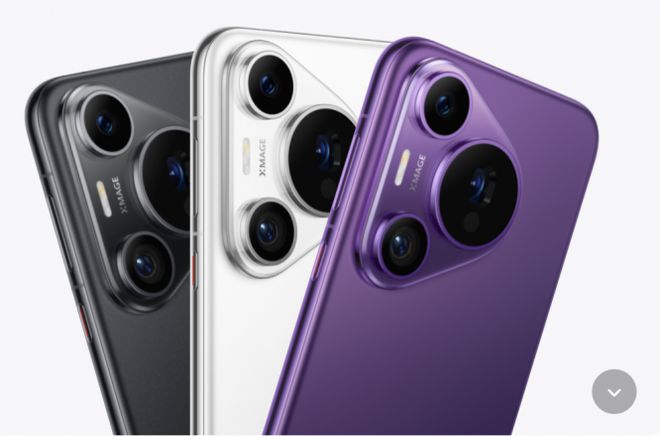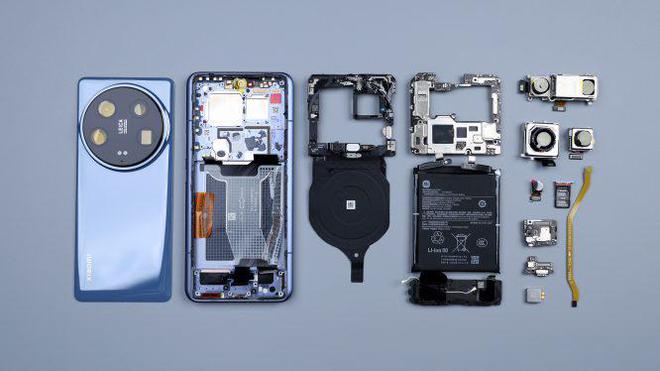Xiaomi 14 Ultra's appearance on the basis of its predecessor to make some fine-tuning, the most obvious change is the back cover removed the Xiaomi 13 Ultra's gently sloping design, so that the back curve has become relatively straight and neat, the continuation of the full wrapped metal centre frame and the three-section visual effect, the use of a larger double side cut curvature, the lines are more filigree, and the front is equipped with a piece of full iso-depth micro-curved screen, all these detailed adjustments combined together, so that the Xiaomi 14 Ultra has a comfortable palm fit and grip. The back is still the classic camera ring, but this time with a new Parisian stud pattern, which gives the Xiaomi Mi 14 Ultra a camera-esque look from multiple angles, and fits right in with its product positioning. Especially with that dedicated camera grip on, you'll realise that there's another deeper purpose to the line design. By the way, do you like the design of the Xiaomi 14 Ultra?
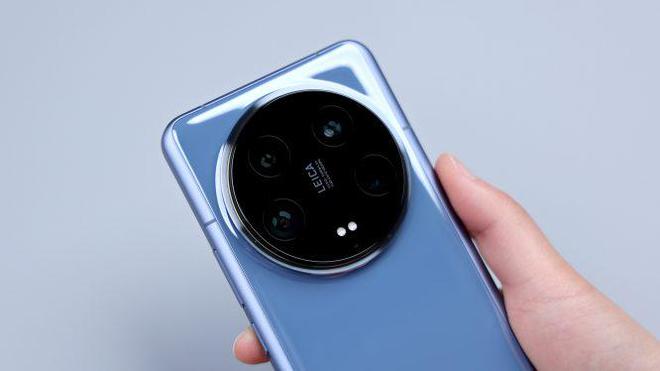
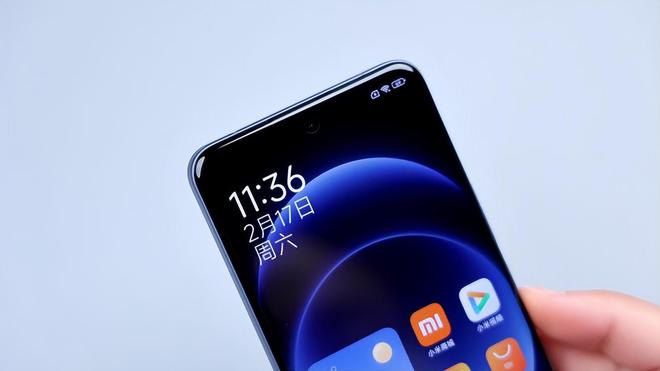
Here is the start of the disassembly, after switching off the phone, take out the SIM card tray, dual nano stack design, metal bezel and bezel + plastic frame, orange dust and waterproof rubber ring.
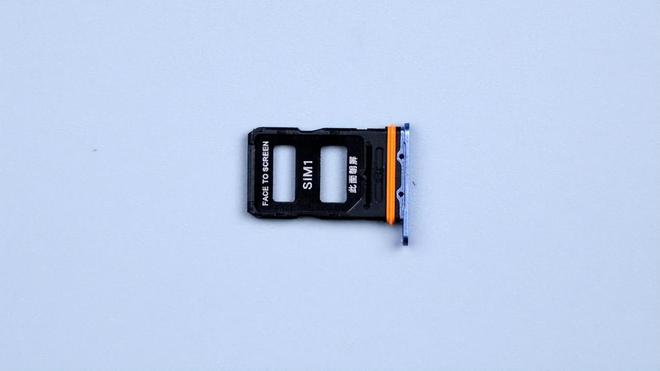
Heating the back cover is a bit complicated. Due to the lens module is too large, in the heating plate is not good operation, can only first heat the bottom, 100 degrees heating for three minutes, assisted by suction cups, it is easy to open the breakthrough, behind the three sides of the de-gluing is very simple, is the upper half have to be heated once again separately, and then clean up the remaining adhesive, and then open the back cover, the process is very easy.
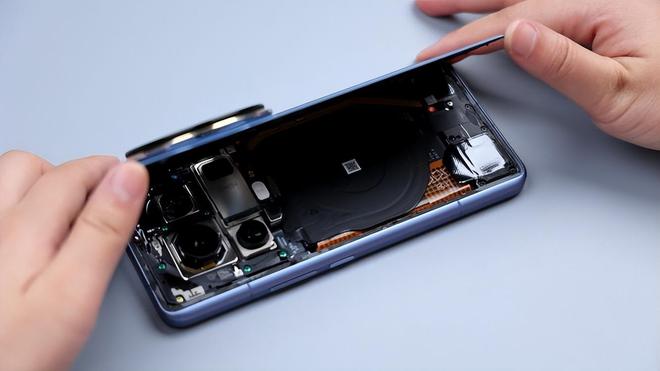
The outer edge of the main body of the phone still has a lot of adhesive residue, once again reflecting the strong adhesive. The most striking thing about the main body of the phone is still the huge rear camera module, the configuration, really for the image of the "monster", just look at the size of the words, each lens out, are enough to do the main camera.
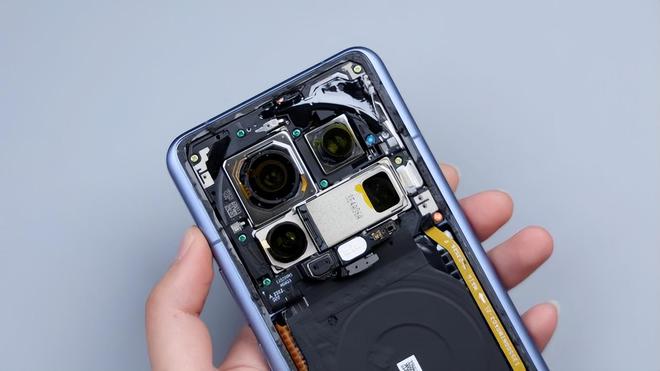
A FPC in the lower left corner extends down to the inside of the cover, which has several small components strung across it, including a laser focus module, flash, IR emitter, rear ambient light sensor, and a rear noise-cancelling microphone, with the flash in a dual-LED bead configuration. The top left, top right, and bottom right corners of the cover are dotted with three LDS laser radar antennas.
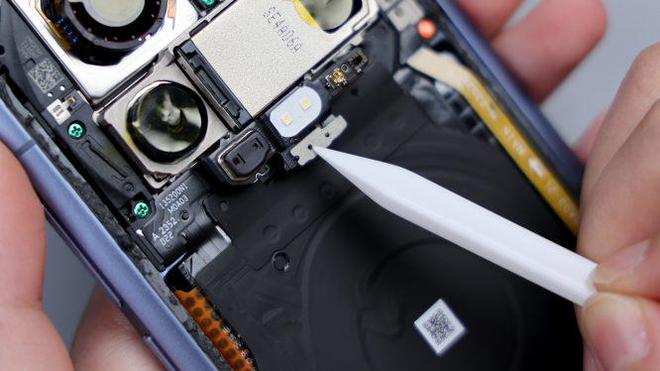
The cover screws come in two colours, green near the camera area and yellow on the surrounding sides. The Xiaomi Mi 14 Ultra's wireless charging and NFC coils are integrated together, located above the battery, and share a common FPC, which has a heat dissipation film attached to its surface and extends downwards to stick to the cover of the secondary board. The yellow FPC, immediately to the right, is responsible for connecting parts of the main and secondary boards.
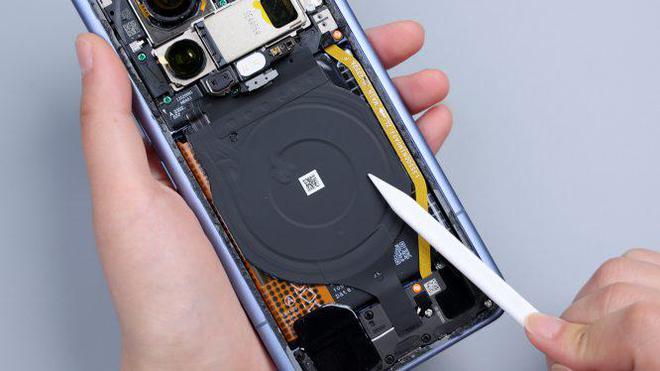
The disassembly continues, unscrew all the fixed screws in the motherboard area, tear off the conductive cloth connecting the periscope head, pry up the cover, and then slowly lift it up in the direction of the battery, paying attention not to exert too much force because the corners are still connected to the BTB of the flash cable, and then after disconnecting it, tear off the heat dissipation film of the NFC coils extension in order to completely remove the cover.
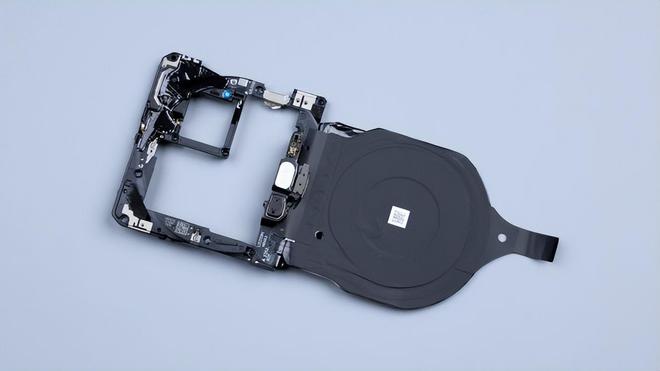
After disconnecting the 2 BTBs from the battery, tear off the conductive cloth from the front lens, then disconnect all the remaining BTB connectors on the A-side of the motherboard in turn, and the main camera, the ultra wide-angle lens, the periscope lens, and the front lens can all be removed.
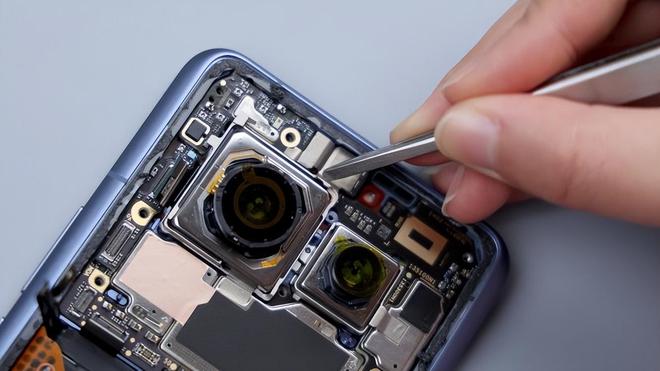
The BTB of the telephoto lens is pressed on the B side of the motherboard, you need to pry up to take out the motherboard, there is a piece of metal plate fixed on the BTB to protect it, pry up the metal plate, disconnect the BTB, you can remove the telephoto lens, and by the way, the grey coaxial cable next to it is also disconnected to remove it.
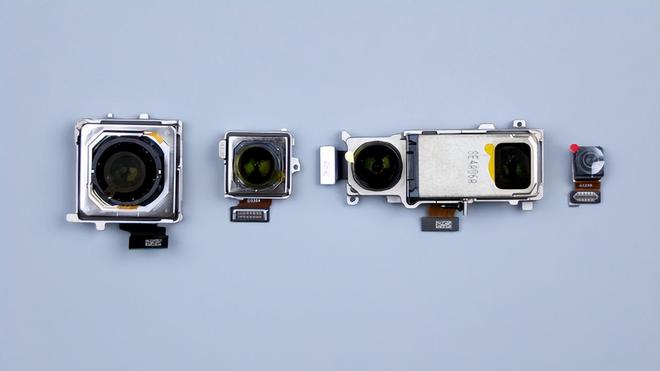
The Xiaomi Mi 14 Ultra comes with a new dual loop cooling pump that provides cooling for the 3rd generation Snapdragon 8 processor as well as adding a camera-specific cooling loop where the lens can touch the heat-even plate directly to ensure stable operation of the camera system.
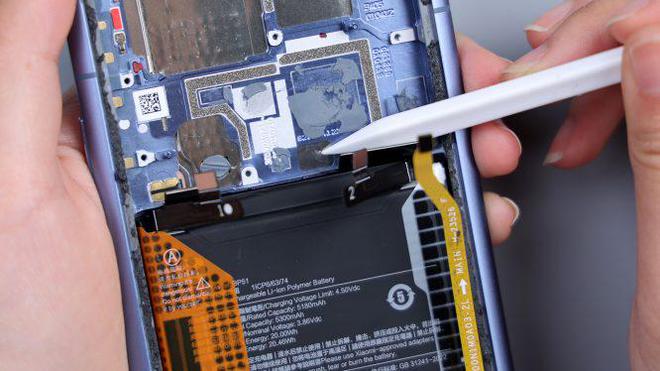
Tear off the single-side easy-open adhesive that holds the battery in place and lift it upwards with force, and it can be easily removed. It adopts a single-cell dual-interface programme with a capacity of 5300mAh, supports 90W wired fast charging and 80W wireless fast charging, the manufacturer is Dongguan New Energy Technology Co Ltd, and the cell supplier is ATL.The frame below the battery has a large hollowed-out area, which is in direct contact with the VC equalisation plate, to dissipate the heat for the battery and the main and sub-panel FPCs.
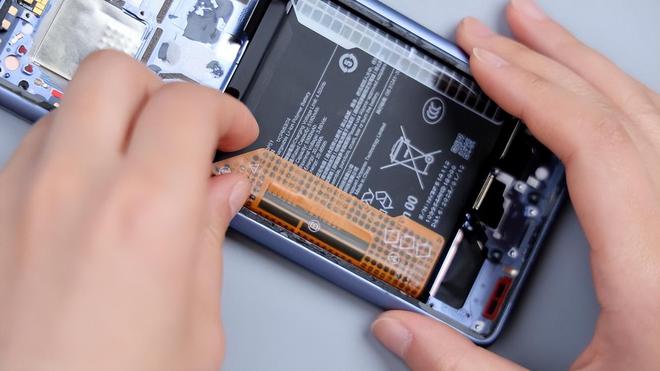
By this point, the Xiaomi Mi 14 Ultra teardown is almost complete. After watching the entire disassembly process, it is not difficult to find that, from the exterior design, modelling profile, to the internal structure and ID design, Xiaomi 14 Ultra has a lot of similarities with its predecessor. At first glance, it seems to be an old bottle of new wine, but instead it reflects the growing maturity of Xiaomi's product thinking, if each generation of products to change the design, frequently update the appearance of the product, it looks like innovation, but in fact there is a great deal of risk and multiple uncertainties. The first point is that every time you have to get a new set of internal structure to adapt to the new appearance, the maturity and stability of the programme, are not a small challenge. On the contrary, small changes to the exterior and fine-tuning of the structure is a more stable approach. Continuous optimisation of details on a set of solutions, continuous micro-innovation, on the one hand, can improve the performance, integration and stability of the product, on the other hand, can be a greater degree of cost savings and control, improve production efficiency and capacity, in the long run, but also more suitable and conducive to the operation of the millet innovation factory. As manufacturers can have more financial resources and energy to invest in research and development, consumers can also use more reliable products, such as Apple's iPhone and Samsung's Galaxy S series, is a representative case of similar product line.
